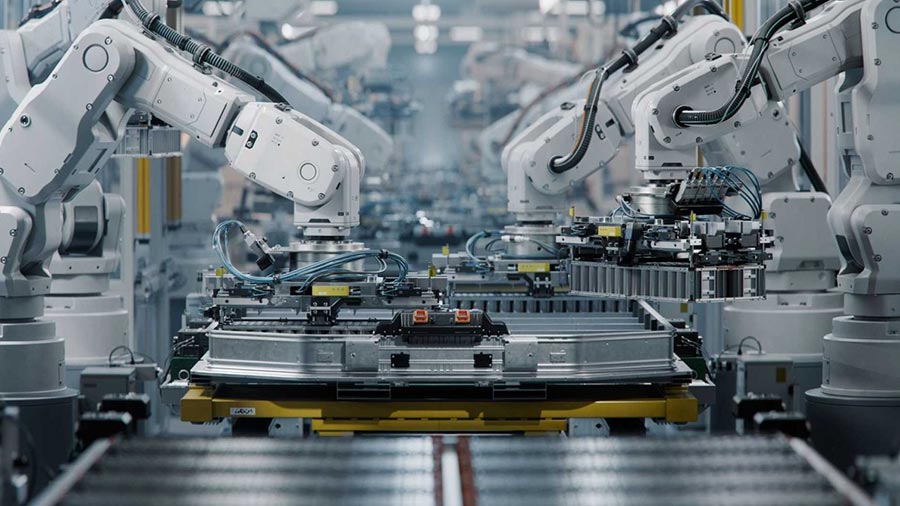China’s Second Tier Cities – the New Kids on the Block
By Nicholas Hughes
Jul. 6 – The HSBC Trade Exchange took place at the Park Hyatt Hotel in Shanghai’s World Financial Center last week from June 27 to June 30. It saw the gathering of business leaders from firms across Europe to understand more about the vast opportunities that are presented by the Chinese market.
Businesses represented at the event were either already doing business in China and were not sure how to capitalize on the new opportunities, or were seriously considering the opportunity of entering China. The guidance, advice, and exchanging of information took place in the form of a series of key-note speeches, presentation, and workshops from industry experts, FDI consultancies, and HSBC representatives.
One of the key-note speakers was Richard Cant, director at Dezan Shira & Associates, whose presentation focused on the rise of China’s second tier cities and the opportunities that they now present. He addressed the large array of factors responsible for the rapid growth of second tier cities and what this means for foreign investors and the future of doing business in the country.
Many foreign investors who consider entering China usually think only about the mega-cities – such as Beijing, Shanghai, Shenzhen and Guangzhou – and the importance of second tier cities is often forgotten, but in fact they are the future engine of China‘s growth. In the first half of 2010, first tier cities continued to expand their local economies by an annualized average of 12 percent. However, this was tame in comparison to the breath-taking pace of activity in provincial capitals such as Chanchun, Hefei, and Yinchuan. GDP growth in these second tier cities averaged 18.5 percent over the same period.
Recent social and economic reforms have transformed and reshaped the industrial, commercial, and regulatory landscapes of China’s developing second tier cities. As living standards and the business environment improve, these cities show enormous potential.
For example, Suzhou’s population was roughly 6.3 million and its GDP was US$774 billion in 2009. In comparison, New York, the largest U.S. city, had a population of about 8.4 million and GDP of nearly US$1.5 trillion in 2009.
Foreign investors are being attracted to second tier cities due to surging demand, lower production costs, improved infrastructure, and favorable policy shifts. The huge amount of government investment into second tier cities and the incentives offered by development zones situated in these cities has created an environment in which opportunities abound. Local governments are eager to work with foreign investors to create good investment environments.
The question and answer session which followed the presentation saw delegates share their experiences of investing in second tier cities. The key theme which came out of the session was whether locating production in second tier cities was cost effective.
A number of delegates agreed that the biggest challenges faced by foreign firms entering China are HR and wages. It became apparent that a lack of skilled labor in second tier cities has been a big issue and the CEO of a UK firm which has been manufacturing since the 1990s in a second tier city said that they had not seen any benefits in moving their manufacturing operations inland due to the problems they faced in attracting skilled labor at the right salary.
The impact of transportation costs from second tier cities was also raised and it was concluded that there is no way to get around the fact that they can be expensive, particularly if a firm is transporting goods to the east coast. In some cases, transportation costs could wipe out the labor cost savings of locating production in second tier cities.
It was concluded that second tier cities cannot be ignored when investing in China. They offer a large number of benefits including lower labor costs, lower rent, lower energy costs, favorable local policies, a steady flow of workers, faster city development, rising consumer incomes, and surging demand. Meanwhile, the coastal regions of China are becoming less attractive as somewhere for foreign manufacturers to locate production (due to rising land, labor, and energy costs) and for firms targeting the consumer market who are faced with high competition and market saturation in first tier cities.
Second tier cities have become an ideal outlet and there is enormous potential for both manufacturers and firms in the consumer market. For foreign firms, now is the time to take advantage.
Other notable speakers and attendees included Mark Berrisford (HSBC’s Senior Economist), Chris Davies (Deputy CEO of HSBC China), Liu Xiaoguang (President and CEO of Bejing Capital), and John Casey (Head of Commercial Banking, Continental Europe).
Dezan Shira & Associates is one of Asia’s largest boutique professional service firms providing foreign direct investment business advisory, tax, accounting, payroll and due diligence services for multinational clients in China, Hong Kong, Vietnam and India. For advice on corporate establishment or market entry in any of these markets please contact info@dezshira.com or download the firm’s brochure here.
Related Reading
 Operational Costs of Business in China’s Inland Cities
Operational Costs of Business in China’s Inland Cities
It is widely held that land and labor costs in inland provinces offer quite significant cost savings over major east coast and southern cities. In this issue, we take a quick look at the numbers behind these beliefs.
 The China Alternative
The China Alternative
Our complete series on other manufacturing destinations in Asia that are now starting to compete with China in terms of labor costs, infrastructure and operational capacity.
Coastal China, Inland China, India or Vietnam for Your Sourcing Business?
The Sichuan Question – Chengdu or Chongqing?
- Previous Article China Incorporations. Let’s Get Real: They are a Tax-Based, not Legal, Structure
- Next Article New Complimentary China City Guides Available from Asia Briefing



























